orest City Enterprises, a Chicago-based developer of biotech parks nationwide, would not necessarily have selected the Denver area for a new biosciences park several years ago. The company’s first park was built 20 years ago adjacent to MIT in the heart of one of the most pre-eminent biotech clusters in the country, says Michael Rosen, senior vice president of new business development for Forest City Enterprise’s Science and Technology Group.
But times are changing in biotech in ways that are making site selectors look beyond the top 10 or even 20 biotech clusters. In the case of Denver, Rosen says Forest City was already involved in a project nearby. When the University of Colorado committed to move facilities to the former Denver airport, Forest City signed on to create a biotech park. “They were doing great science in key areas, had venture capitalists and the presence of serial entrepreneurs along with the presence of large, recognized companies like Amgen,” says Rosen, explaining other factors that helped seal the deal for Denver.
Although Rosen is hardly writing off the known biotech clusters, he believes the biotech boom spells opportunities for other regions. “We’re beginning to see the mainstreaming of biotech beyond drugs and agriculture,” he says. “Now we’re seeing nanotechnology, biofuels and homeland security applications taking hold as well. Nanotechnology, biofuels and homeland security weren’t there 10 years ago, which is shifting some focus out of conventional drugs and could take site selectors away from the top sectors into new arenas.”
“There are many cities and towns working hard to develop new biotech industry centers. The competition is hot. Just as technology has transformed business, biotech is the next wave and will transform healthcare as we know it,” adds Gautam Jaggi, a senior executive with Ernst & Young’s new Global Biotechnology Center in Boston and editor of Beyond Borders, Ernst & Young’s study of global biotech.
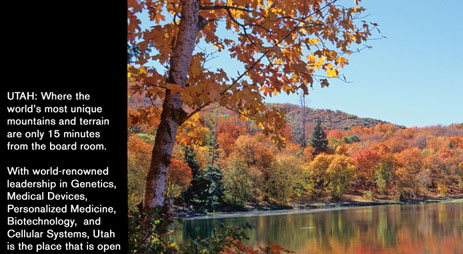 |
 |
Dennis Guberski could be the sign of the future for biotech. Rather than locate his diabetes-related biotech company, Biomedical Research Models, in Boston – which many experts consider the leading biotech cluster in the country along with San Francisco – Guberski moved portions of his business to Springfield, Mass., one of scores of cities trying to carve out a niche in this highly competitive market.
|
It doesn’t bother Guberski that Springfield didn’t make anyone’s list (see box) of an outstanding biotech region, let alone an emerging region. As he says, “I’m always trying to predict the next wave of biotech and I feel that wave in Massachusetts is moving westward from Worcester to western Massachusetts and all the way to Albany, N.Y.”
Guberski cites housing prices (off the charts in the Boston area), the lack of long commutes and the cost of doing business as key reasons for his choice. “The costs of doing business are cheaper out here by more than 30 percent. And I don’t have to compete with the work force to get the best and brightest working for me. There’s lots of trained work force that is readily recruited,” he says.
When searching for a biotech cluster for a client, Rosen doesn’t look for location, per se, but at the NIH, NASA and Homeland Security funding the university or research institute is attracting. Although his searches often lead to well-known clusters, he says Forest City is also looking at regions that would not scream biotech at first mention. Without naming names, he says “some of these places are quite different.”
For all the potential that biotech holds, a wide array of experts interviewed for this piece say it can take decades to build the sort of critical mass that has put Boston, San Francisco, San Diego, Philadelphia, the Research Triangle and others on the biotech map. “If a new region doesn’t have something that’s state of the art at a world-class level, it’s not going to make it. They’ve got to have some kind of critical mass in science that will attract people worldwide,” Rosen says.
Thus no one is writing off the well-established biotech clusters. Site selectors trying to assess various biotech clusters would never overlook regions with a proven track record in turning basic research into commercial products. Of the 18 elements cited (see box) the most crucial were: a strong research institute/university; educated work force; a local venture capital (VC) community and availability of capital; specialized real estate/infrastructure; government backing; a tech transfer program located at a regional university or medical facility that can commercialize research; a mixture of large companies and startups, liaison organizations that provide cohesion for the biotech sector, and a good quality of life that started with affordable housing, availability of mass transit and cultural assets.
Regions considered outstanding in biotech always have several things in common, says Jaggi. “Every leading cluster in the country, or the world, invariably has a strong university or other sources of research. After that, you must have tech transfer mechanisms to commercialize the research, which means having the right commercial incentives.”
He considers capital the “lifeblood of the industry,” which means having venture capitalists close by. “When it comes time for that fledgling company to have capital and they’re getting money from a VC hundreds of miles away, they may move because VCs want to cluster their portfolio companies.”
Being able to attract skilled labor is critical, but it can become a vicious or virtuous cycle depending on circumstances, says Jaggi. “If you’ve got enough of an existing cluster you will attract scientific and managerial talent because there are many job options.” The problem for emerging regions is that “you need a cluster to attract top people and the top people to build the cluster.”
While agreeing about the presence of basic research and capital, Alicia Loffler, director of the Kellogg School of Management’s Center for Biotechnology at Northwestern University in Chicago, Ill., says successful biotech clusters must have “a critical mass of activity, meaning companies that are competing with each other. Competition forces them to be better and better.” To this mix, Loffler adds an active professional service sector that includes lawyers, consultants and developers to provide the infrastructure for everything from buildings to advice, and “communication tools, from trade associations to tech transfer organizations, to connect all these entities.”
What also makes a Boston, San Francisco, Houston or Research Triangle strong, she says, is the fact that all these various elements “are close by.”
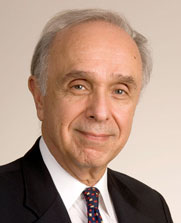 |
| Paul Friedmann, executive director of the Pioneer Life Sciences Institute in Springfield, Mass. |
Loffler argues that human proximity, even in an age of electronics and e-commerce, is crucial to success. “It’s that unspoken information that takes place by bumping into each other that’s the most important aspect to giving a cluster a competitive edge.”
When Paul Friedmann thinks of an outstanding biotech region as a model he talks about San Diego. Friedmann, who is executive director of the Pioneer Life Sciences Institute in Springfield, Mass., says “over the last 20 years San Diego has done a marvelous job of developing [its] research and biotechnology focus. They’re very broadly based with no one industry focus, they have the University of California’s medical school and the presence of a significant research institute [Scripps]. All the institutions have made major research commitments and out of that deep research soup money and other sources of support have emerged.”
Since his retirement in 2000 from Philadelphia’s University City Science Center, a research park incubator, Charles Dilks has conducted numerous consulting assignments in technology-led economic development. President of Dilksconsulting Inc. in Philadelphia, Dilks doesn’t consider biotech “just big companies. Most of us deal with very small biotech firms that are start-ups or near start-ups.”
His recipe for an outstanding biotech cluster also includes the presence of “an entrepreneurial environment – that is, an environment where entrepreneurs, law firms and other entities wield enough respect to attract young people who might otherwise leave.”
|
||||||
Also, he believes a region’s tech transfer program “should be part of the university itself. It must have the expertise or initiative to make deals or that intellectual property won’t generate any commercial momentum.”
“It’s a step-by-step process, but the biggest bottleneck is a region’s inability to commercialize, not its lack of IP or money,” Dilks adds. “It’s the people [who] get IP from the universities and bring it to market. That piece of talent is critical. That’s the biggest limiting force.”
The experts were divided on the need for a pharmaceutical company to be part of the mix. Sean Nugent, executive director for Global Strategic Facilities Planning at Pfizer’s New London, Conn.-based R&D operation, says, “Having a pharmaceutical in the area isn’t a critical factor. I think the key thing is that we don’t look at regions, but at technologies. The important thing for us to see is unique technology being supported by solid resources, which include skilled workers and a strong connection to a local university of college.”
Nugent offers San Francisco as an example, with its concentration of research universities – Stanford, the University of San Francisco and University of California-Berkeley – connecting with regional biotech entrepreneurs, many of whom are located in South San Francisco. There’s the sort of interpersonal connection Loffler describes that allows for “new ideas to be created that leads to new start-ups.”
On the other hand, Troy Kirkpatrick, manager of media relations at Cardinal Health in Dublin, Ohio, thinks that the presence of an existing pharmaceutical company is a hallmark of most pre-eminent biotech regions. It shows employees “they are not going to an outpost,” he says. He would add proximity to an international airport and a good quality of life as other pluses.
For regions or clusters trying to emulate the big guns of biotech, the experts agree with Rosen when he says “if good science is going on, a fledgling region has a hope. There’s got to be a critical mass of scientific endeavor that makes it world class in whatever it’s doing.”
Like Rosen, Nugent will look at a new region that has “very
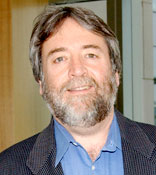 |
| Sean Nugent, executive director for Global Strategic Facilities Planning at Pfizer’s New London, Conn.- based R&D operation |
unique technology, a strong local support for emerging companies that need capital and assistance. Scientists don’t want to feel stuck when they move to a new area. They’re willing to take a risk if they can see a plan and a future.” He advises communities to “focus on the one thing that will improve your chance of success, which can mean building off the basic industries that are already there” and staking out new turf.
“Find your niche. Don’t try to be something to everyone. You won’t become a Boston or San Francisco or San Diego overnight,” agrees Jaggi. “It’s often better to find unmet needs – and there are lots of them in this industry. Do the hard analysis of your region’s strengths and weaknesses to determine how your region can best compete.”
Both Friedmann and Kirkpatrick say it may not be realistic for a fledgling region to specialize. To be sustainable, Kirkpatrick says “it will be necessary to build out wide.” Friedmann believes it’s more a combination of both approaches – building on strengths while being open to opportunities that arise.
Loffler is facing all these issues right now as she’s seeing the ingredients for a biotech region “finally gelling. We have the services in Illinois, but lack a critical mass of companies.”
Whether focusing on attracting outside firms or building from within, both Loffler and Friedmann agree that new fledgling biotech regions need government backing.
“If you look around the country, every place that’s made a major move has done so with local, regional, state and federal government support. You need a significant amount of government funding and support,” said Friedmann.
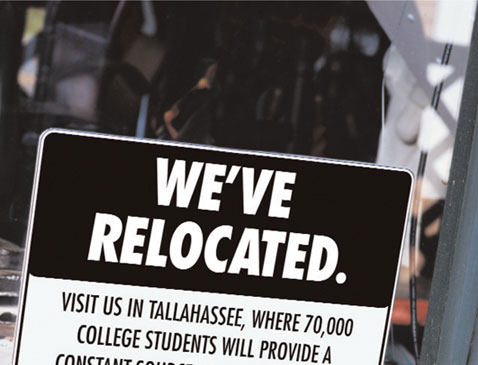 |
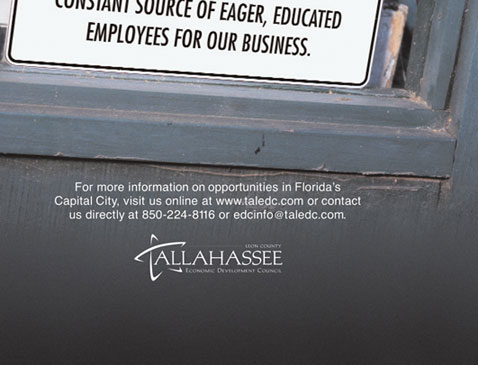 |